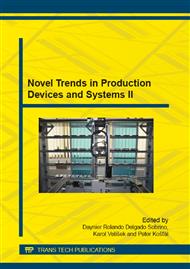p.273
p.279
p.285
p.293
p.299
p.305
p.311
p.317
p.323
The Effect of Real and Averaged Boundary Conditions on the Cooling Rate for the Simulation of Heat Treatment Processes
Abstract:
The paper deals with problems of computer modelling of heat treatment processes. The effect of the choice of the coefficient of heat transfer between the coolant and components was quantified. The oil Isorapid HM 277 was chosen as the coolant. Two cases of application of the convective boundary condition were studied through numerical experiment. In the first of the cases, a real functional dependence of the heat transfer coefficient (HTC) was applied on the surface temperature. In the second case, it was used constant and temperature independent values of HTC on the surface temperature. Cooling curves were obtained through numerical experiment. Derived variables such as cooling rate, the density of the thermal flows are shown in the paper. Code ANSYS was used as interpretative tool of the numerical experiment.
Info:
Periodical:
Pages:
299-304
Citation:
Online since:
December 2014
Authors:
Price:
Сopyright:
© 2014 Trans Tech Publications Ltd. All Rights Reserved
Share:
Citation:


